Electric Stove Temperature 1–10 Guide: What Each Number Means
Updated: 5 Jul 2025
442
Ever wondered what those numbers on your electric stove actually mean? You’re not alone. Many home cooks guess their way through cooking—risking burnt meals or undercooked food—just because their stove doesn’t show real temperatures.
The problem is simple: electric stoves use numbers (1 to 10) instead of actual heat readings. Most manufacturers don’t explain it clearly, and Google isn’t much help either.
“Precision is the secret ingredient to any great recipe.”
In this post, you’ll learn what electric stove temperature 1–10 really means, and how to match each number with the right cooking task. We’ll also cover electric burner numbers to temperature charts, safety tips, common myths, and how to test your stove’s heat, the smart way.
Table of Contents
Understanding Electric Stove Temperature (Knob Setting)
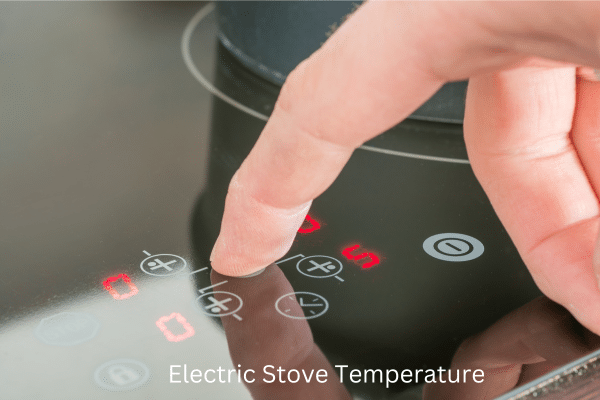
When you look at your stove dial, you’ll see numbers 1 to 10. But what do they mean? Most electric stoves don’t show real temperatures. Instead, they show heat levels or power settings. That’s where confusion starts.
Each number controls how much electricity flows to the coil. More power means more heat. So, turning your dial from 3 to 6 increases the cooking temperature. But there’s no fixed temperature behind these numbers. It’s an estimate, and it can vary by stove brand.
Here’s the basic idea:
- 1 to 3 = Low heat
- 4 to 6 = Medium heat
- 7 to 10 = High heat
Quick Comparison Table
| Stove Setting | Heat Zone | Estimated Temp (°F) | Best For |
|---|---|---|---|
| 1–3 | Low | 150–250°F | Melting, simmering |
| 4–6 | Medium | 300–375°F | Sautéing, eggs, pancakes |
| 7–10 | High | 375–500°F | Boiling, searing, frying |
What Does “Electric Stove Temperature 1–10” Mean?
The numbers 1 to 10 on an electric stove are power levels, not temperatures. Each level controls how much electricity flows to the burner. More electricity = more heat.
Electric Stove Temperature Chart (Power Levels 1–10)
Here’s a simple chart that shows estimated heat ranges for each setting. It also tells you what each level is best for.
| Stove Setting | Heat Level | Estimated Temp (°F) | Best For |
|---|---|---|---|
| 1 | Low | ~150–200°F | Warming, melting butter |
| 2 | Low-Medium | ~200–250°F | Simmering sauces |
| 3 | Medium-Low | ~250–300°F | Cooking eggs, delicate items |
| 4 | Medium | ~300–325°F | Pancakes, grilled cheese |
| 5 | Medium | ~325–350°F | Sauteing, stir-fry |
| 6 | Medium-High | ~350–375°F | Pasta water, browning |
| 7 | High | ~375–400°F | Searing meats |
| 8 | Very High | ~400–425°F | Boiling fast |
| 9 | Maximum Heat | ~425–450°F | Frying, fast cooking |
| 10 | Max/Boost | ~450–500°F | Boiling large pots quickly |
Note: Keep in mind, this is an estimate. Some stoves heat faster or hotter. Test your own for best results.
Stove Heat Zones Simplified: Low, Medium, and High
Trying to memorize all 10 heat levels can be overwhelming. So here’s a better way: break the dial into three easy zones—low, medium, and high. This makes cooking simpler and more predictable.
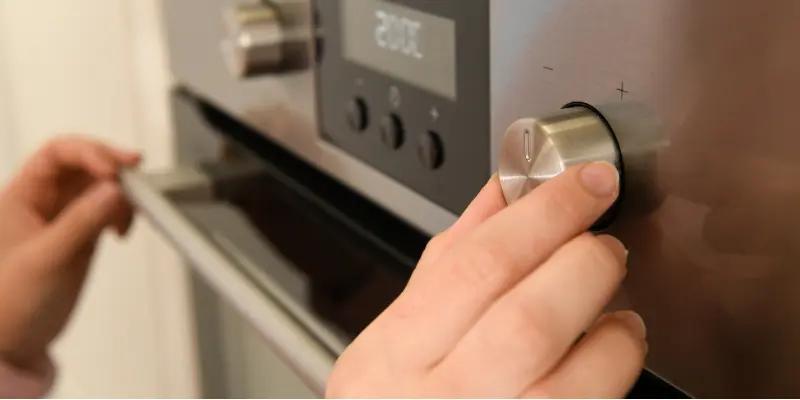
Low Heat (Settings 1–3)
- Estimated temp: 150°F to 250°F
- Use for:
- Warming leftovers
- Melting butter or chocolate
- Simmering sauces
- Cooking delicate foods like soft-boiled eggs
- Safe and gentle, but too low for browning or searing
Medium Heat (Settings 4–6)
- Estimated temp: 300°F to 375°F
- Use for:
- Sauteing vegetables
- Cooking pancakes
- Scrambled eggs
- Grilled cheese
- Pasta and rice
To know “What is medium heat on an electric stove?” Follow our guide on How to Maintain Medium Heat on Electric Stove: A Guide to Electric Stove Cooking
High Heat (Settings 7–10)
- Estimated temp: 375°F to 500°F
- Use for:
- Boiling water quickly
- Searing steaks
- Deep frying
- Fast stir-frying
But be careful—this is where things can burn fast. Never leave food unattended at these levels.
What Is the Temperature of Stove Setting 6?
One of the most searched—and least clearly answered—questions is:
“What is number 6 on the electric stove?”
Let’s clear it up.
Setting 6 on most electric stoves falls under medium-high heat, roughly between 350°F and 375°F. It’s ideal for:
- Cooking thicker cuts of meat
- Frying chicken
- Stir-frying vegetables
- Boiling pasta with consistent heat
Here’s a tip:
If you’re cooking on setting 6, don’t walk away. Use it when you’re nearby and ready to stir or flip your food.
Real Cooking Examples by Stove Dial Numbers
Still unsure which setting to use when cooking? Let’s break it down with real, everyday examples.
Settings 1–3 (Low Heat)
Use when you need gentle heat:
- 1 – Keep food warm without burning
- 2 – Melt butter or chocolate slowly
- 3 – Simmer soups and sauces
You can also read our post to get more understanding of What Temperature is Simmer 1-10 on A Stove
Settings 4–6 (Medium to Medium-High Heat)
This is the sweet spot for most recipes:
- 4 – Cook scrambled eggs or French toast
- 5 – Sauté onions, steam veggies
- 6 – Stir-fry chicken, pan-sear fish
Tip: Watch closely while cooking at these levels. Adjust as needed.
Settings 7–10 (High Heat)
Use when you need intense heat fast:
- 7 – Brown meat, make crispy hash browns
- 8 – Boil pasta or potatoes quickly
- 9 – Sear steak or cook burgers
- 10 – Boil large pots fast or deep fry (but with care)
Warning: Settings above 7 can burn food fast. Don’t walk away while cooking.
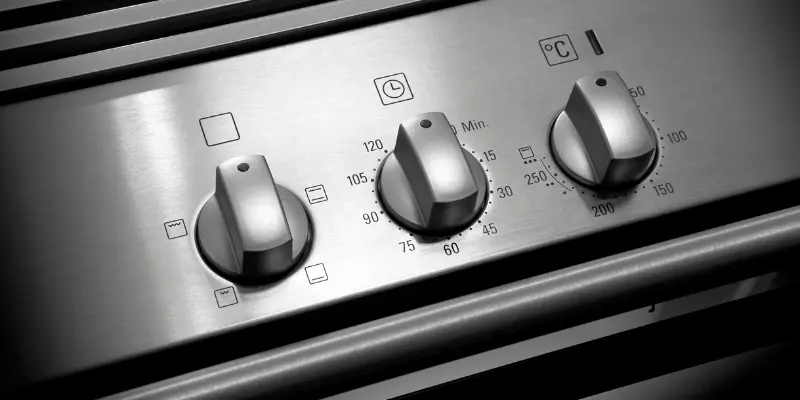
How to Test the Temperature of Your Electric Stove
Want to know how hot your burner really gets? Most people never test it. That’s why they struggle with burnt or undercooked food. Here’s how you can easily test your stove settings at home.
Method 1: Infrared Thermometer
- Place a pan on the burner
- Turn the dial to a number (e.g., 5)
- Wait 5–7 minutes
- Use an infrared thermometer to measure the pan temperature
Method 2: Water Test
- Add a teaspoon of water to a hot pan
- Observe reaction:
- Slow sizzle = low heat
- Quick jump = medium
- Immediate boil-off = high heat
This is a simple trick to gauge heat zones quickly—great if you don’t have a thermometer.
Why You Should Test Your Stove
Not all stoves are the same. Even at stove setting 1–10 temperature, heat varies by:
- Coil size
- Age of the stove
- Pan material
- Voltage and power
Are Stove Numbers the Same on All Electric Stoves?
The short answer: No, stove dial numbers are not universal.
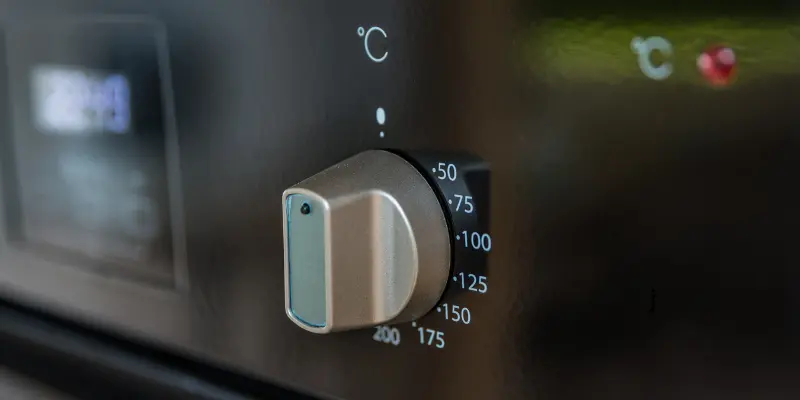
One major confusion users face is thinking that setting 5 on one stove will be the same on another. But heat output can vary widely depending on:
- Stove brand and model
- Type of heating element (coil, smooth-top, radiant)
- Voltage and wattage
- Age and condition of the stove
So if you’ve been asking, “Are stove settings 1–10 temperature consistent across all electric stoves?” the truth is: not exactly.
Why Electric Stoves Don’t Show Real Temperatures
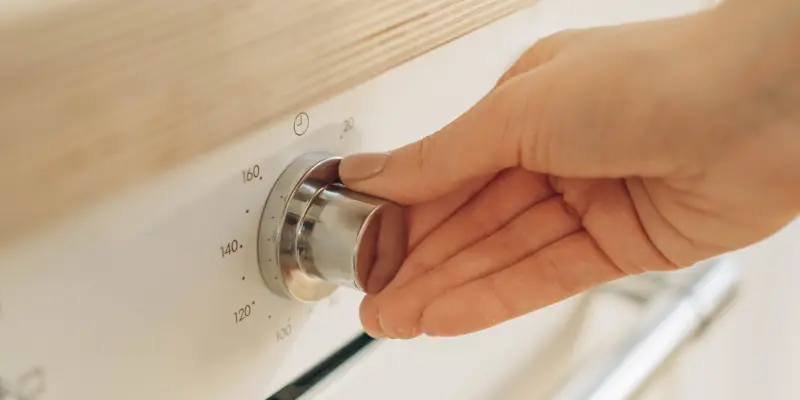
Unlike ovens, most electric stoves don’t display actual heat in degrees. They use a dial because the stove burner controls the electrical current, not a set temperature. But it causes confusion for cooks.
Why manufacturers do this:
- Easier design and lower cost
- Fewer components to fail
- Users can learn to adapt to power levels over time
Safety Tips for Using Stove Heat Settings Wisely
Cooking on an electric stove is safe—if you use it the right way. Here are some simple safety tips to follow when using electric stove heat settings 1 to 10:
Dos:
- Preheat your pan before cooking
- Use flat-bottomed pans for even heat
- Turn off the stove before the food is fully cooked (carryover heat helps)
- Keep flammable items away from burners
Don’ts:
- Walk away from the stove on settings above 6
- Use warped pans that cause uneven heating
- Let the oil overheat—it can catch fire
- Cover coil burners while hot
Common Myths About Stove Temperature Settings
Many people have the wrong ideas about stove settings. Let’s clear them up.
- Myth 1: All stoves heat the same
- Truth: Heat varies between models and brands.
- Myth 2: Boiling water needs to be set to 10
- Truth: Most pots boil just fine at level 8 or 9.
- Myth 3: Setting 1 is safe to leave on all day
- Truth: Any heat left unattended can be a fire risk.
FAQs
Q. What’s setting 7 used for?
High heat tasks, like searing or fast boiling.
Why does food burn on setting 4?
Your stove might run hotter than others. Use a thermometer to check.
Can I use cast iron on high heat?
Yes, but be cautious. Cast iron retains heat well and can overcook food if left too long.
Conclusion
Mastering your electric stove temperature 1–10 settings, can change how you cook every day. No more guessing or burnt meals. Each number on your dial controls a different level of heat, from gentle warming at level 1 to fast boiling at level 10.
Whether you’re simmering soup on low heat, sautéing vegetables on medium, or searing steak on high, knowing your dial helps every dish turn out better.
“Cooking isn’t about guessing—it’s about knowing your heat.”
Every stove is different. So take time to test your own. Start small. Test your stove. Create a cheat sheet for your favorite meals. With this knowledge, your electric stove becomes your best kitchen partner.
References
- https://www.energy.gov/energysaver/kitchen-appliances
- https://www.consumerreports.org/appliances
- https://www.nfpa.org/education-and-research/home-fire-safety/cooking
Please Write Your Comments